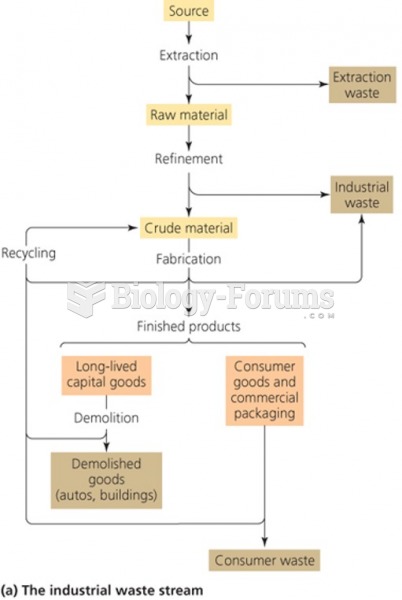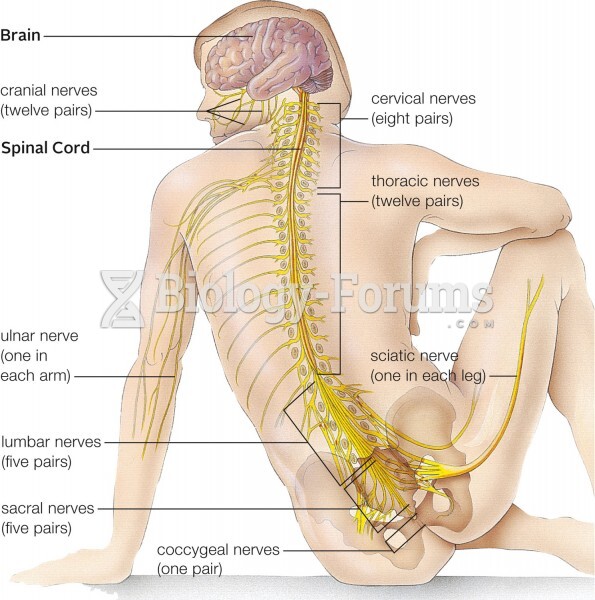Answer to Question 1
As supply chains grow increasingly complex, organizations need technology to help them thrive. Managing global relationships, collaborating with logistics service providers, and serving omnichannel consumers requires advanced information systems functionality. That is, information systems must support cross-chain visibility, agility, velocity, synchronization, adaptability, segmentation, and optimization. When properly deployed, these supply chain process enablers help organizations achieve significantly higher levels of performance on both revenue growth and earnings measures when compared to their industry peers.6
Cross-chain Visibility: Managers need to control key supply chain activities. Having the most current data about the supply chain is a prerequisite for effective decision making and rapid problem response by managers. Visibility tools provide quick access to global supply chain information, generate supply chain alerts, support management by exception, and facilitate trading partner collaboration. Ultimately, greater visibility supports process variability reduction, performance optimization, and supply chain cost control.7
Agility: In rapidly changing market conditions, supply chain managers must quickly recalibrate plans and respond to supply and demand volatility. Agile supply chains have the capability, capacity, and flexibility to deliver consistent or comparable cost, quality, and customer service under changing conditions. Appropriately designed systems have strong decision support analytics that model various scenarios. This helps supply chain managers to better understand volatility and respond appropriately.8
Velocity: The speed of product flows across the supply chain must be aligned with customer expectations. These velocity requirements are situation dependentemergency replenishment and new product introductions require greater velocity than a normal replenishment of existing products. The ability to adjust speeds accordingly is essential. Capable systems capture order cycle time requirements, sequence orders, and identify the best delivery methods to ensure that fulfillment velocity meets customer deadlines.
Synchronization: The goal of a multi-organization supply chain is to function as a single entity that produces and distributes the inventory needed to meet customer requirements. By synchronizing data, resources, and processes, the supply chain partners can coordinate supply and demand over time. Technology facilitates the real-time information sharing between partners that drives consistent insights and collaborative decisions. Inventory optimization software, workforce management applications, and advanced demand management tools have been shown to improve the alignment of supply and demand.9
Adaptability: Organizations must strategically adapt the design and capabilities of a supply chain to evolving conditions. They can capitalize on demographic trends, political shifts, emerging economies, and other new opportunities through alteration of their supply chain operating model. This requires a flexible, geographically dispersed network supported by strong technology to analyze options and properly allocate network capacity. By linking supply chain technologies to sales and marketing systems, companies can sense and respond to real-time market needs and shape demand when capacity is limited.10
Segmentation: Organizations must dynamically align their demand and supply response capabilities to optimize net profitability across each customer segment. Offering differentiated service levels to each segment, the organization can increase sales and reduce costs. They avoid the one size fits all strategy that under-serves important customers and creates unnecessary costs. Technology can help an organization define logical segments, understand the cost to serve them, and prioritize service execution so that key groups receive appropriate attention.11
Optimization: To achieve peak supply chain performance, an organization must consider numerous trade-offs, effectively deploy its resources, and make the best possible decision. Supply chain optimization technologies use mathematical modeling tools to quickly run through the options to find the solution that facilitates success for all supply chain stakeholders. These tools can be used to study network design options, determine appropriate inventory levels, develop routing decisions, and more. The goal is to maximize service for the minimal possible operating costs.
These seven supply chain process enablers are by no means comprehensive or static. First, information systems must support initiatives related to supply chain innovation, performance analysis and improvement, risk management, and profitability. Second, these enabling technologies must evolve over time to meet new competitive challenges and changing customer requirements. Supply chain managers would be wise to regularly review these enablers and modify them as needed.
Putting the seven process enablers into practice and generating their value is not a simple task. A company cannot purchase software for a single process and expect to fundamentally improve its supply chain. Instead, an investment is required in a supply chain information system (SCIS) that provides critical knowledge links and automated information flows between internal processes and with external partners. SCIS enable firms to streamline their supply chain processes and provide management with more accurate information about what to produce, store, and move.12
It is important to note that immediate success is not guaranteed. Many SCIS implementations have produced less than stellar initial results. A SCIS initiative will go much smoother and add greater value when time is taken to properly link the technology to people and processes in an intentional and integrated fashion. The technology must be connected across the supply chain. People need to adapt to the full capabilities of the SCIS. And, processes need to be updated to make use of the information that is generated through the SCIS.
Properly connected technology generates access to data for informed supply chain decision making. Compared to a manual or partially integrated system, the data in a well-crafted and properly linked network supports data collection and synchronization through automated capture tools. Linking the SCIS across facilities and companies using an Internet or electronic data interchange (EDI) platform allows information to be quickly shared among collaborating companies at low cost.
With a capable, connected SCIS and data that are accurate, standardized, and readily available, focus must turn to the people element of the network. The people tasked with implementing and integrating the technology need the requisite skills, as well as adequate staff and financial resources to complete the work. Also, the day-to-day SCIS users must be properly trained in the appropriate use of the tools. Acclimating users to the SCIS and helping them understand why the tools were adopted will facilitate acceptance and positively impact supply chain performance.
After the technology foundation has been established and users understand the SCIS capabilities, the existing supply chain processes must be reviewed. The risk of not doing this is that inefficient, outdated, or unnecessary processes will be automated, providing little return on the SCIS investment. As needed, operating procedures must be updated and new goals for supply chain productivity, accuracy, timeliness, and cost should be established. Doing so will help supply chain managers fully leverage the process-enhancing capabilities of the SCIS.
The linkage of strong technology, properly trained users, and improved processes, creates a robust operating environment. Using the right SCIS, managers will be properly positioned to effectively plan and execute supply chain processes, make informed decisions, and respond quickly to potential problems. A comprehensive SCIS will also generate scorecards and dashboards that managers can use to continuously monitor, analyze, and improve performance.
Answer to Question 2
False







